History Rhyming
April 5, 2024 Fascism Berlin Architecture Expressionism Modernism Authenticity Olivia Laing Eve Kosofski Sedgwick Hope History
What we’ve lost to authoritarianism, and what we stand to lose if it comes back.
They say the building was so modern that the responsible bishop refused to consecrate it. And so they had to find a less conservative stand-in to perform the rites when St. Augustinus church was opened in 1928.
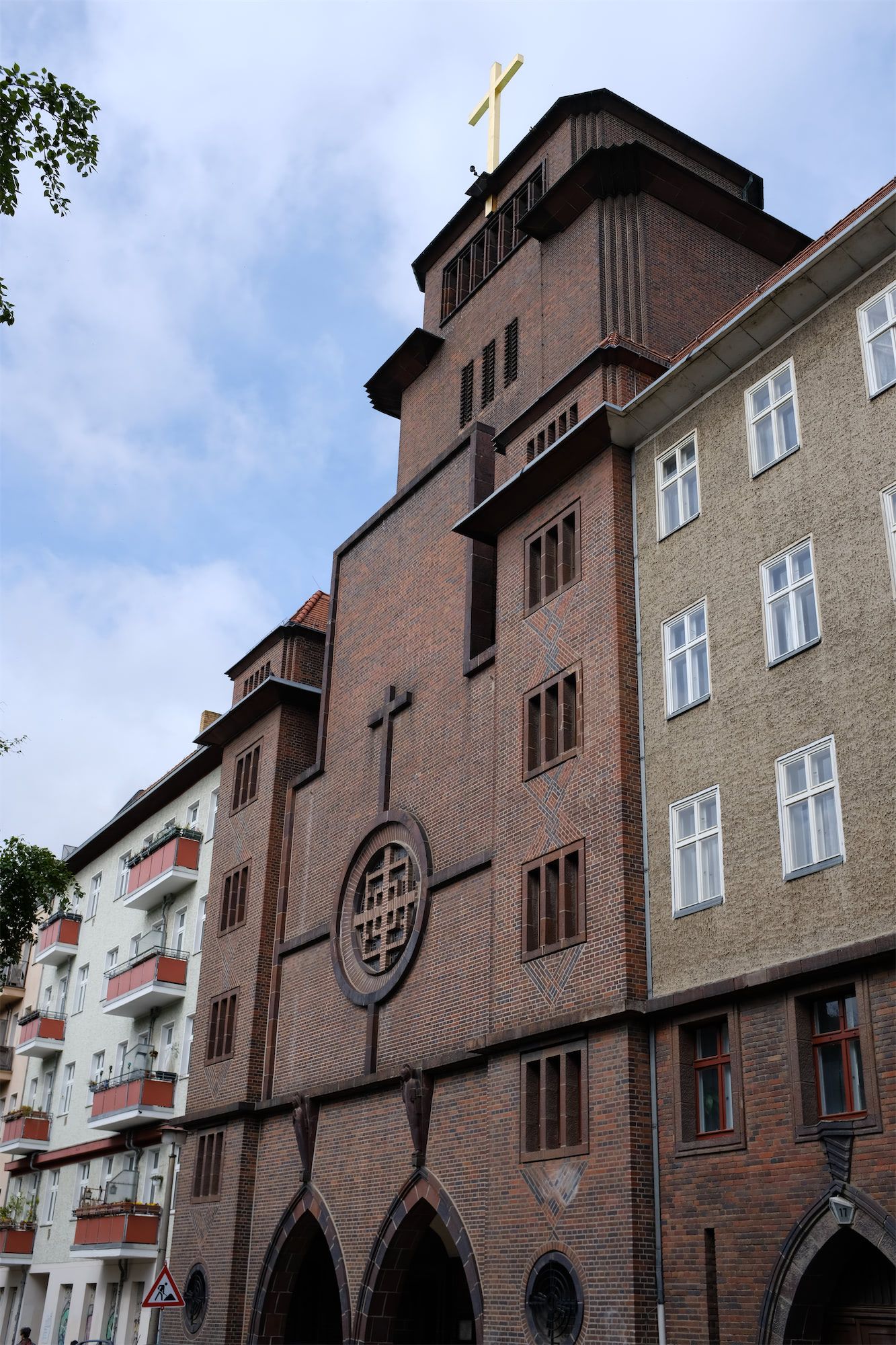
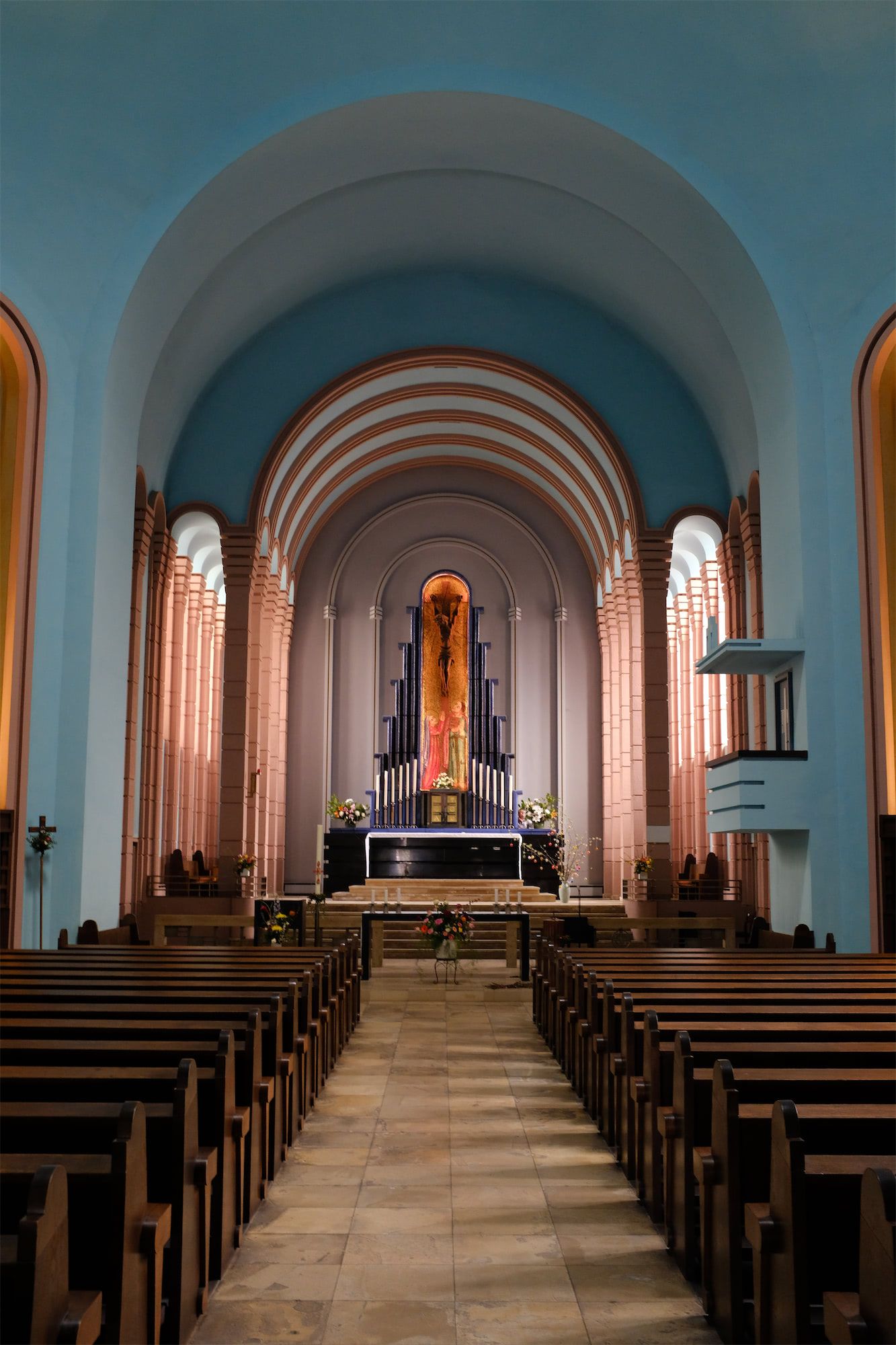
Today, the church stands a short walk from my house, tucked neatly between adjourning residential buildings. You could be forgiven to wonder what the fuss was all about.
Like much of the architecture of its era, the outside is made from sleek redbrick, but it otherwise blends in with its surroundings. Only when you step inside do you notice what a radical departure it is from usual church fare: The inside is strikingly modern in color and style, yet it’s also clearly a hundred years old.
This was a building ahead of its time: In Fragments of Metropolis, the author Christoph Rauhut writes that during the interwar period, Berlin was the epicenter of expressionist architecture in Europe:
“For there, where the exchange between painting, literature, music, sculpture, and architecture was particularly intensive. Expressionism was, more than any other movement, the avant-garde of the era.”
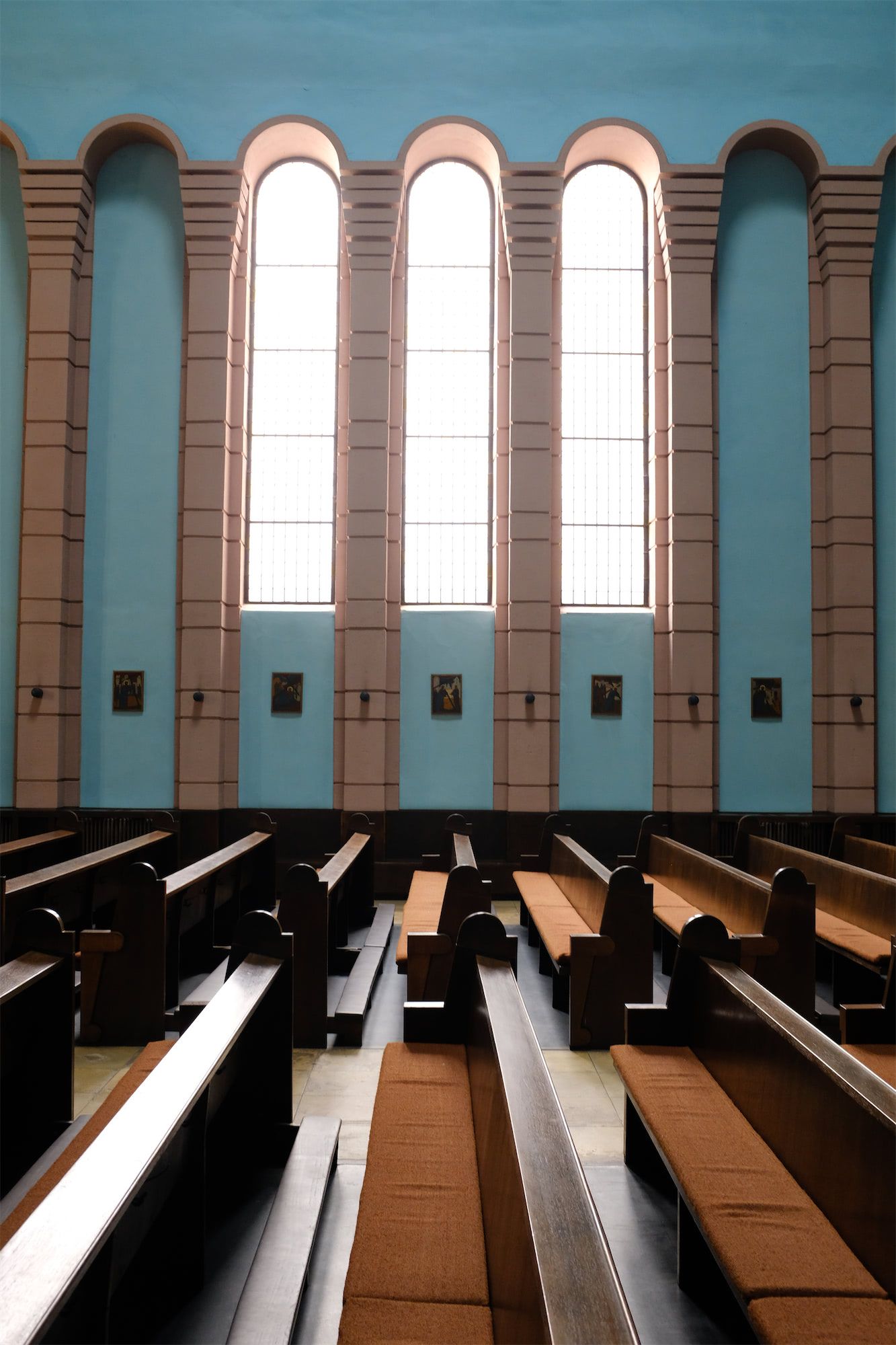
Expressionism, much like the New Objectivity/Bauhaus style occurring at the same time, was shaped by the idea that architecture could contribute to the forming of a new, more progressive society: “People wanted to get away from the political and social formalisms of the 19th century, away from the stench of its tenement housings,” writes Rauhut.
But unlike its more sober cousin, expressionist architecture wasn’t all function over form: It emphasized art and craftsmanship, natural colors and materials. Aside from being more spectacular, it was more humanist and, dare I say: More poetic.1
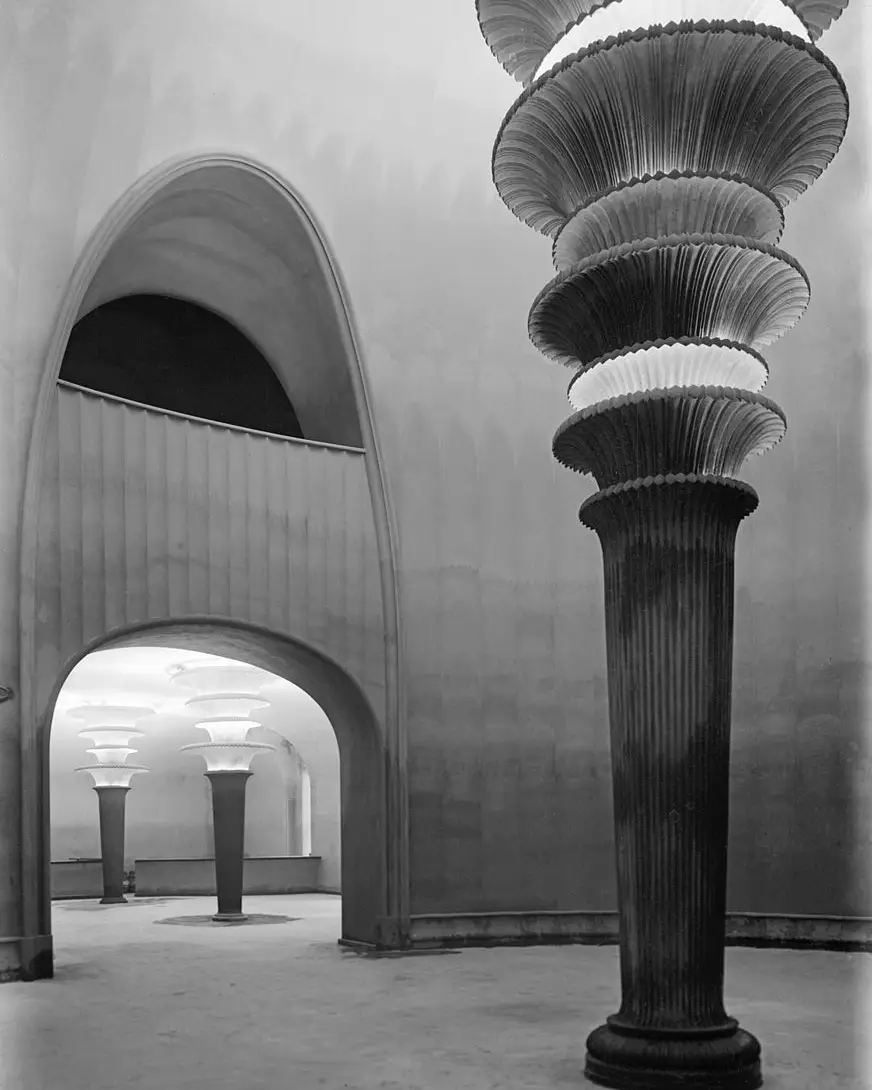 Hans Pölzig’s Neues Schauspielhaus, torn down in 1988
Hans Pölzig’s Neues Schauspielhaus, torn down in 1988
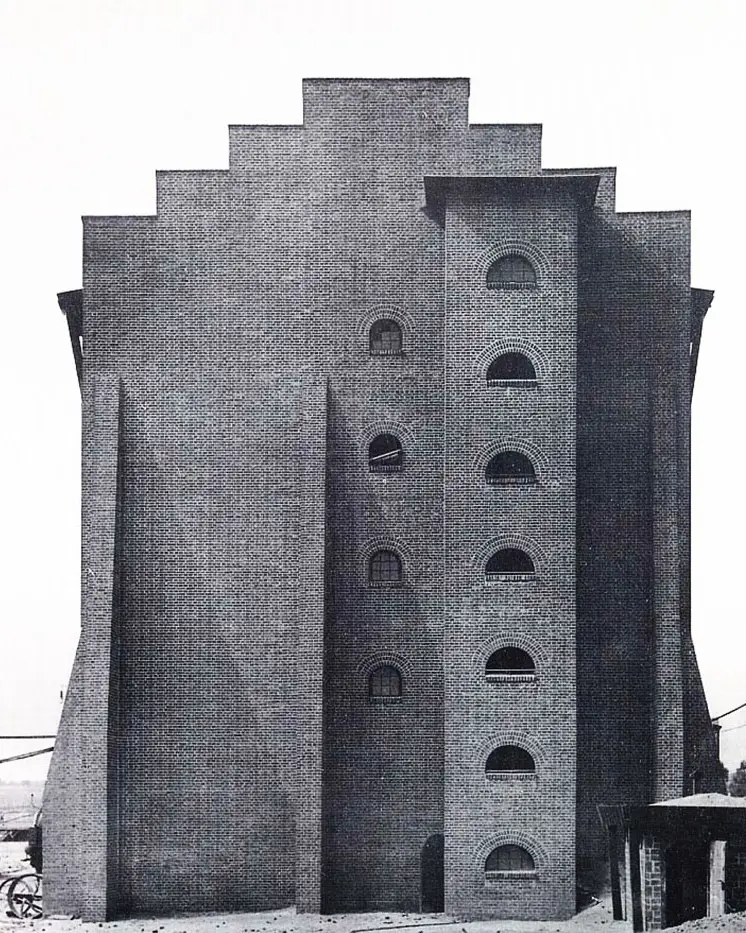 Hans Pölzig’s sulfuric acid factory
Hans Pölzig’s sulfuric acid factory
Expressionist architecture was shelved by the fascists as soon as they got into power. This is somewhat unsurprising: Regimes of all stripes love to jettison what exists in a quest to appear progressive.2 In the case of a revisionist regime like the Nazis, progress is invariable regressive: An attempt to restore a past that—sometimes—never even existed. The Nazis, after all, ushered in a strangely neo-classical building style harping back to an imaginative past.
The point is that I’m often shocked just how much progress was discarded in the quest to restore an imaginary past, the exact progress that expressionism and other art, social, or political movements had brought.
The Nazis were, of course, responsible for a whole litany of crimes, but one of the sub-plots of their 12 years in power is that they also took their own country back to a much more conservative state. From the arts to women’s and queer rights, Germany was thrown back to a reactionary conservatism that erased all inclusion and tolerance that had been built up over decades.3
Somehow, my neighborhood church survived WWII and now serves as a reminder of what we lost: An alternative branch of the past, tantalizing with possibility for different, more diverse society. It’s also a reminder of what we once again stand to lose if someone with a regressive agenda takes power, dead-set on reversing progress and returning to the idealized before times.
I’ve written a lot about this sentiment, about my nostalgia for those dead branches of the past, always questioning if they provide any hopefulness for the future—or just dread and paranoia.
In Funny Weather, Olivia Laing makes the case that art—just like this church—can be a “training ground for possibility”. She quotes Eve Kosofski Sedgwick’s essay Paranoid Reading and Reparative Reading, where the author turns my concern on its head: There’s no certainty for how the future will turn out, but it’s important we always remember there’s possibility.
Because the reader has room to realize that the future might be different from the present, it is also possible for her to entertain such profoundly painful, profoundly relieving, ethically crucial possibilities as that the past, in turn, could have happened differently from the way it actually did.
The paternalistic insistence on functionality is what I like to think about as modernism biggest failing: Though doubtlessly beautiful in its rationality, it’s often too sober and affords preciously little space for humans and their desire for beauty. Expressionism is warmer, weirder, and all the more enthralling for it.↩︎
The Nazis not only closed the Bauhaus, they also established a strange, Neo-classicist architecture that was all Greek columns, and high ceilings. Not much space for poetic impressionism.↩︎
The same is true for Francoist Spain, which froze the country into a permanently conservative state for close to 40 years, culminating in the explosive Movida following the transition to democracy.↩︎